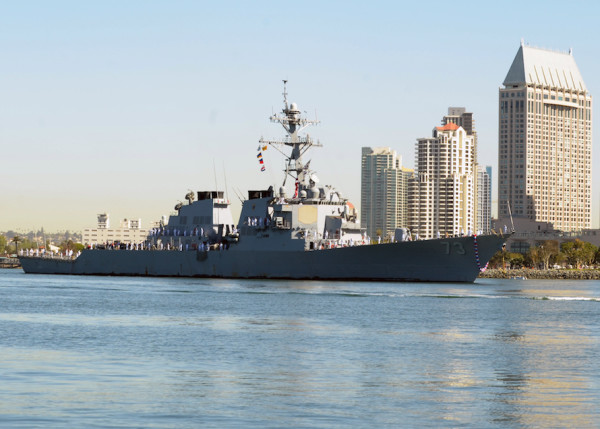

The Navy saw decisive cuts within the fiscal year 2017 defense budget, but is expected to be more capable, according to an event page from American Enterprise Institute.
The think tank, which hosted Chief Naval Officer Adm. John Richardson, showcased how the U.S. Navy is posturing itself to compete against nations like China, Russia, and Iran in coming years.
“There are these forces at play in the environment that if we don’t respond to those forces, we’re just going to be left behind,” Richardson told former Sen. Jim Talent — a senior fellow with AEI.
“We need both presence and posture,” Talent said.
He added that in the current climate, it’s hard to gauge where the focus should be, and asked Richardson if it was possible for the Navy to achieve that.
Richardson said, “You really need both … you can’t go all in one direction or all in the other.”
This year, the Navy’s proposed budget was guided by “A Design for Maintaining Maritime Superiority,” Richardson’s strategy for outlining the maritime environment, which “reflects the character of the security environment and accounts for the forces at play in the maritime system, the force of the information system and the force of technology entering the environment,” according to the Navy’s Chief of Information Office.
The Navy now has to try to anticipate new technologies and look forward to what the competitive maritime warfighting environment will be in the future, so that it can posture itself adequately, Richardson said.
He added, “We’re in a time of a great power competition.”
Coming in at $165 billion, 2.5% less than what was requested for 2016, the Navy is hoping to become a leaner, more competitive, balanced force.
Personnel numbers are expected to drop from 329,200 billets to 322,900 billets in 2017.
Moreover, after continued failure within the littoral combat ship program, the Navy announced it will no longer seek to purchase a third version of the ship in 2017.
As far as fleet modernization goes, the chief information office press release reports that next year’s budget plans to buy seven new ships including two Arleigh Burke-class destroyers, two Virginia-class submarines, two littoral combat ships, and one America-class amphibious assault ship. The plan is to grow the fleet to 308 ships during fiscal year 2021.
